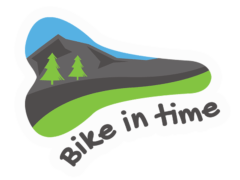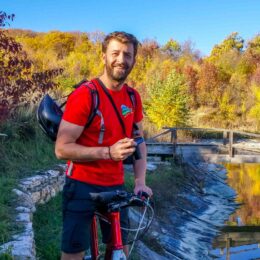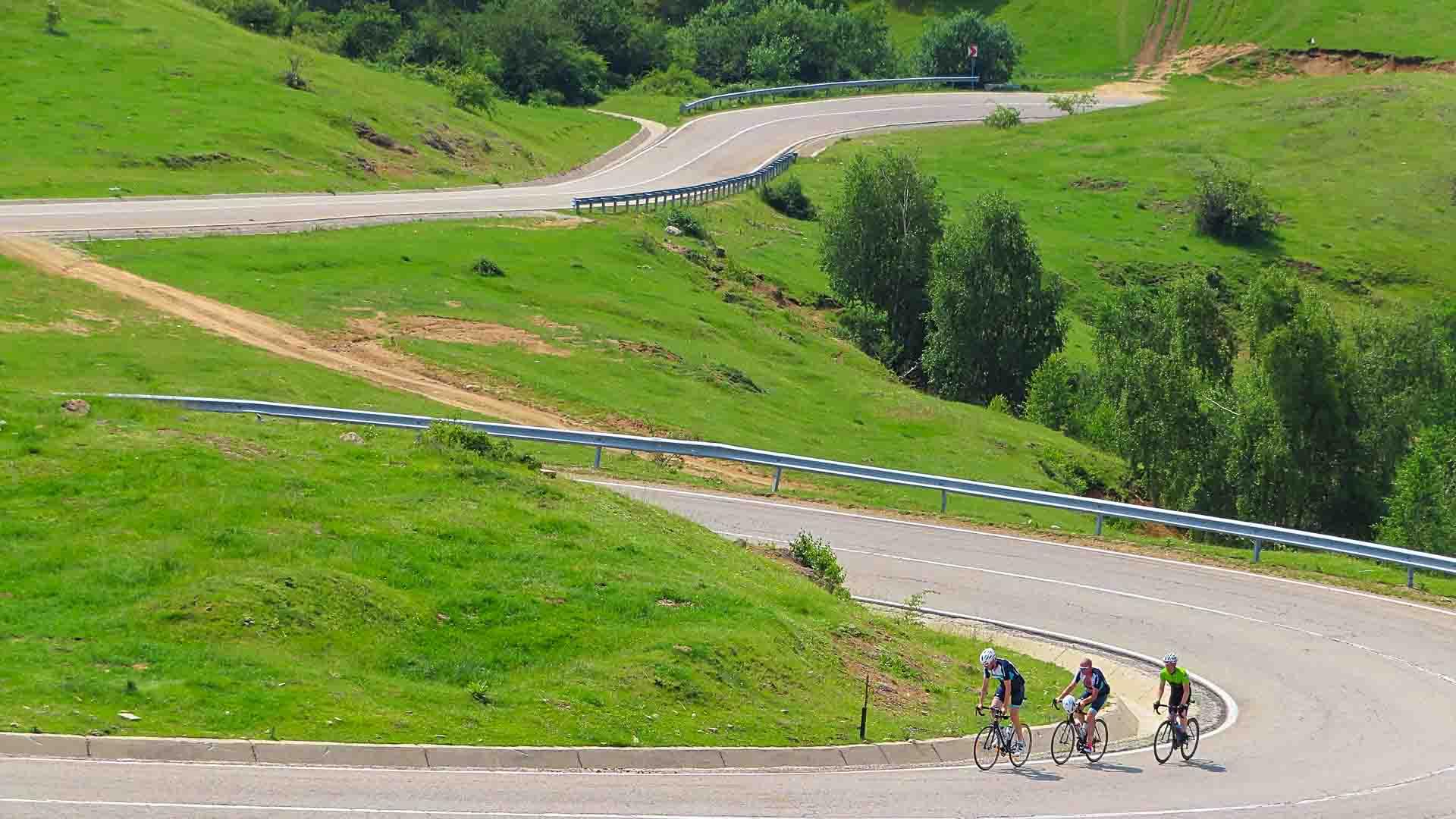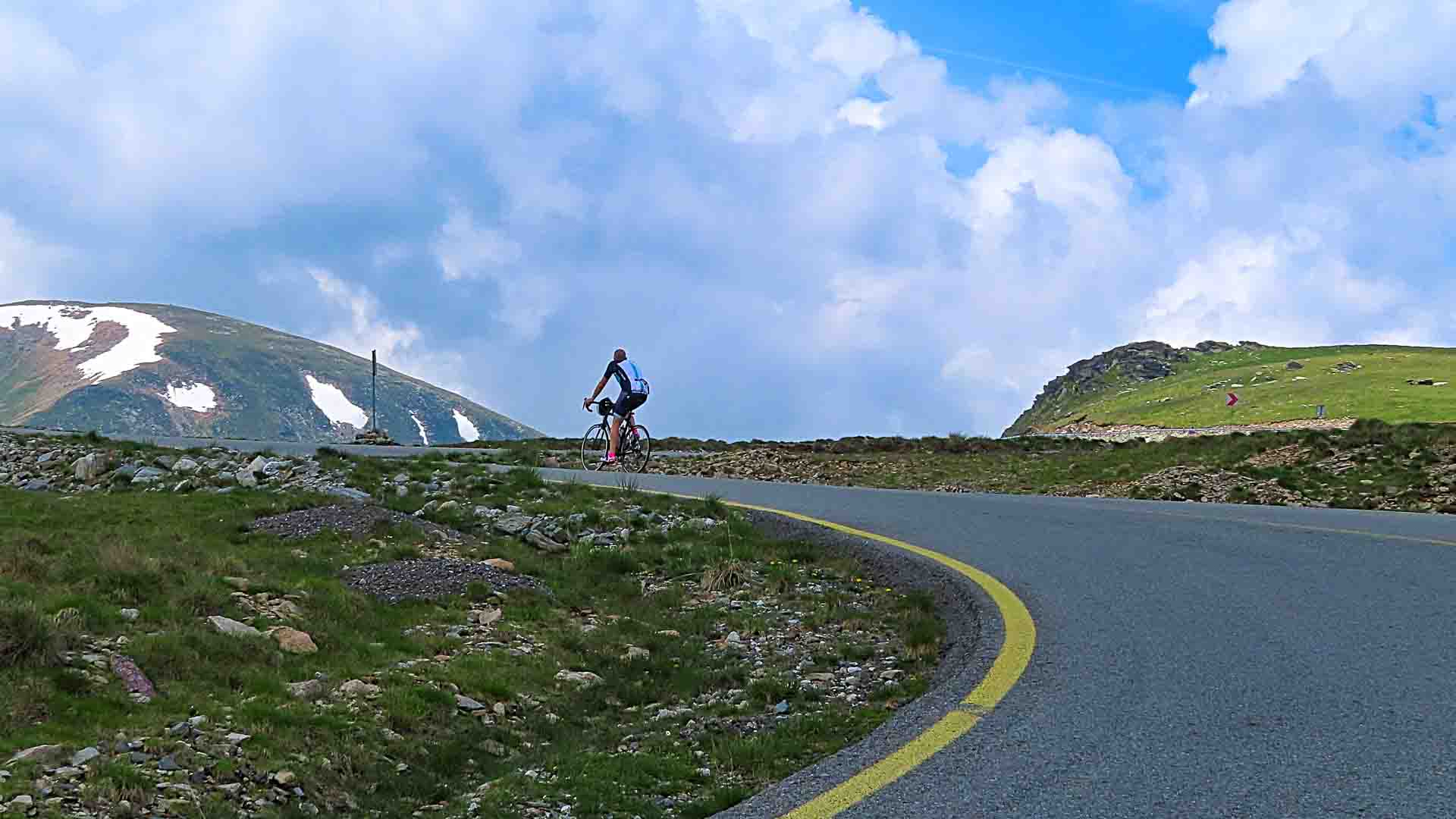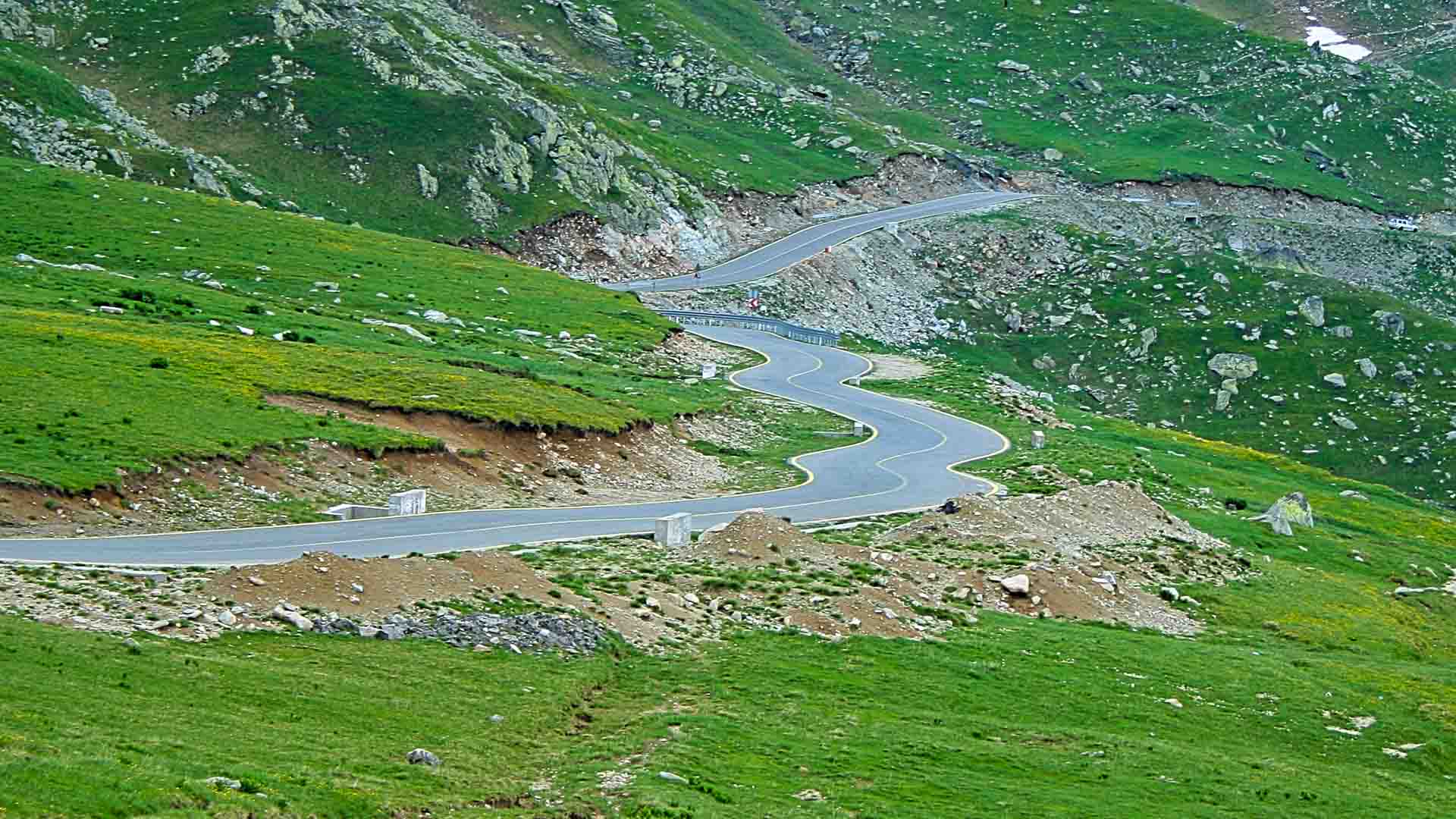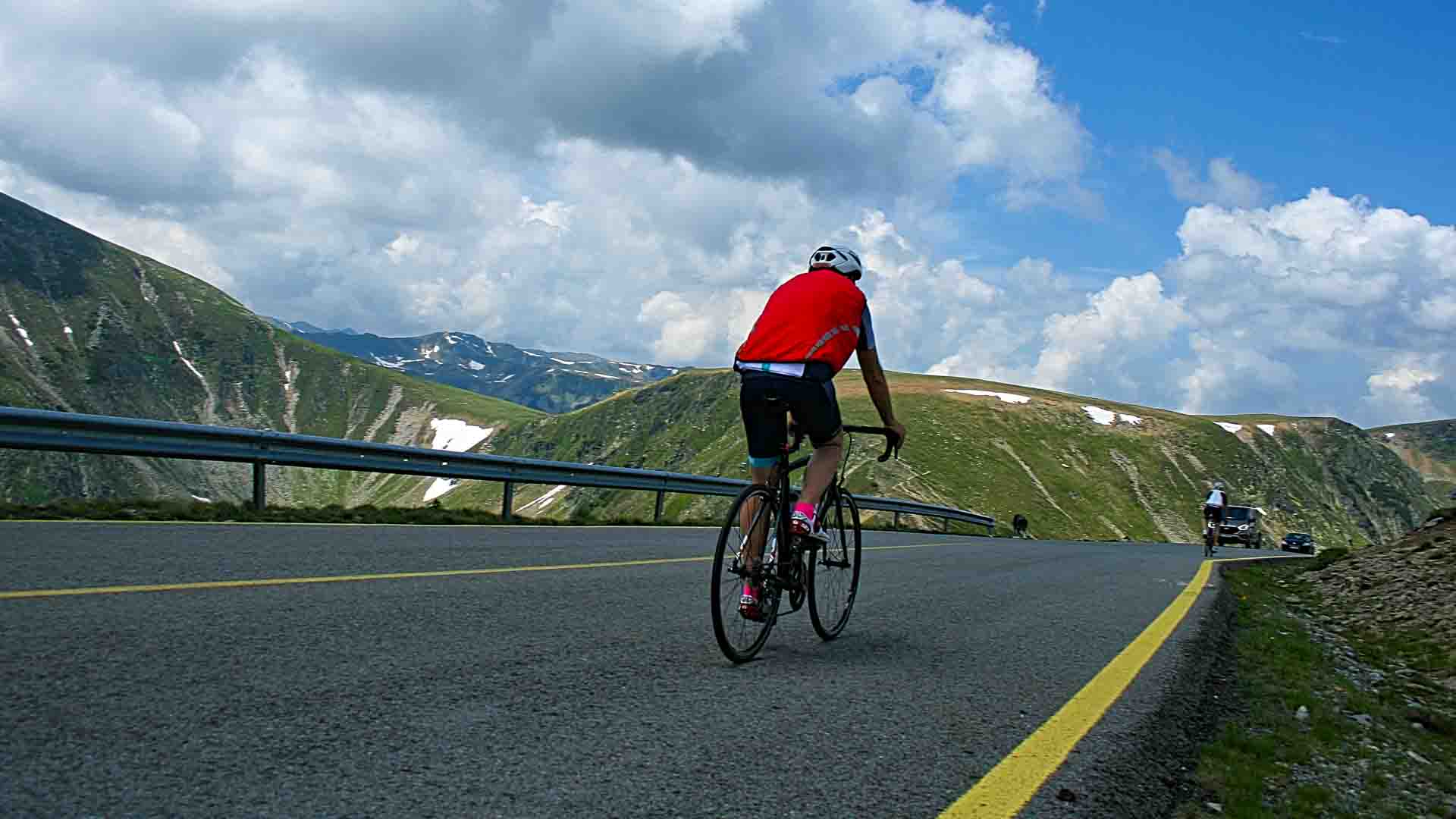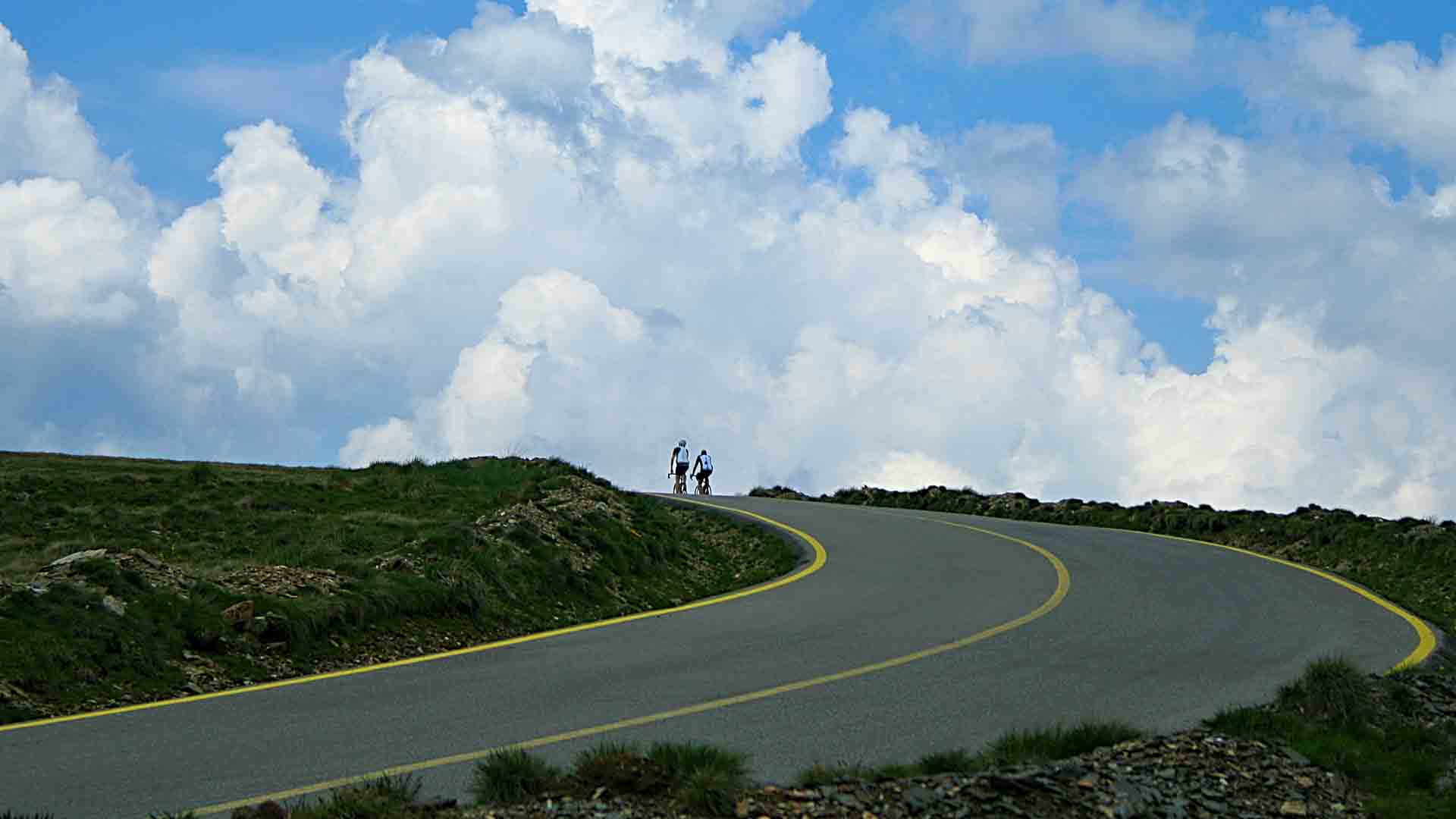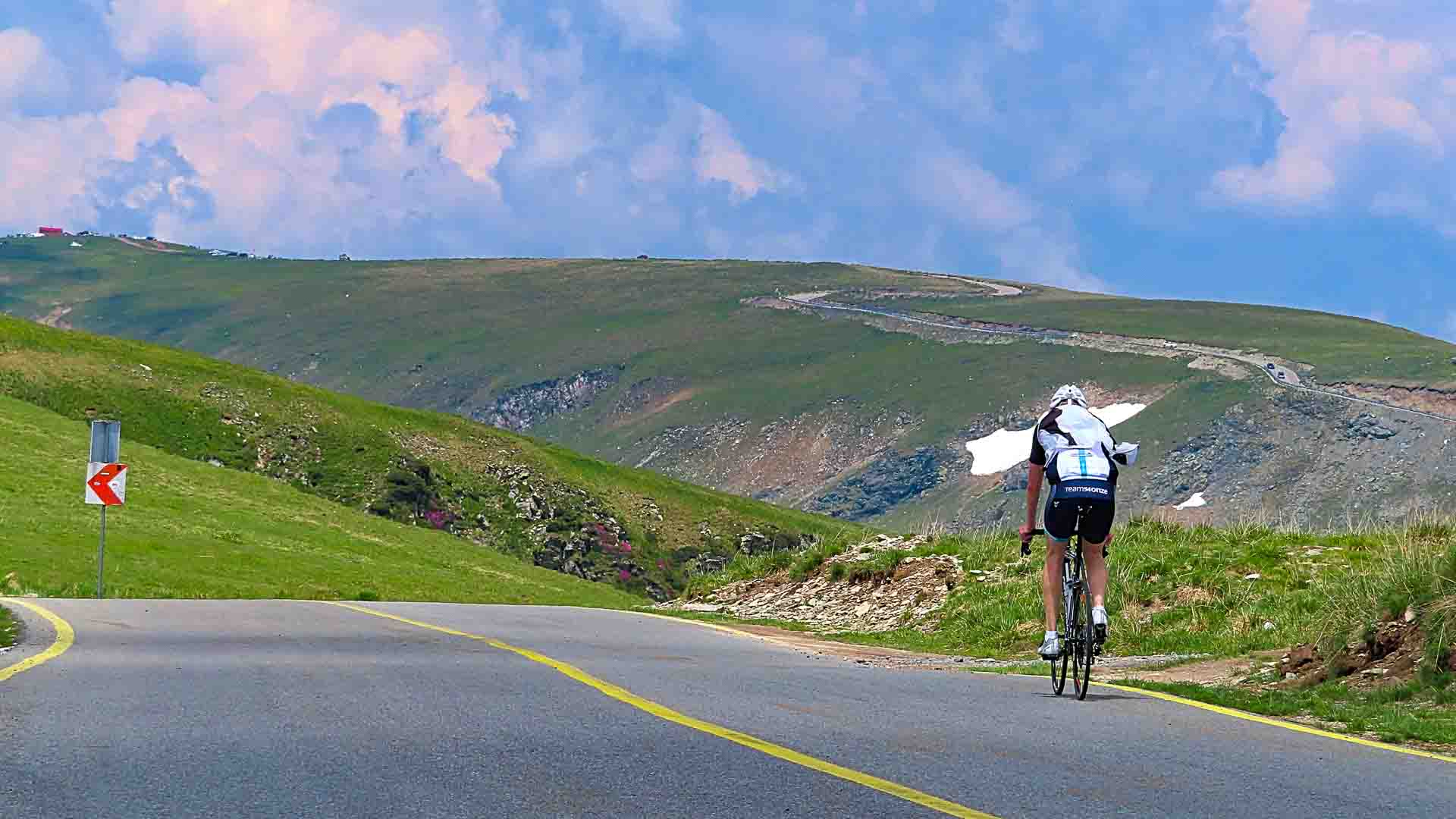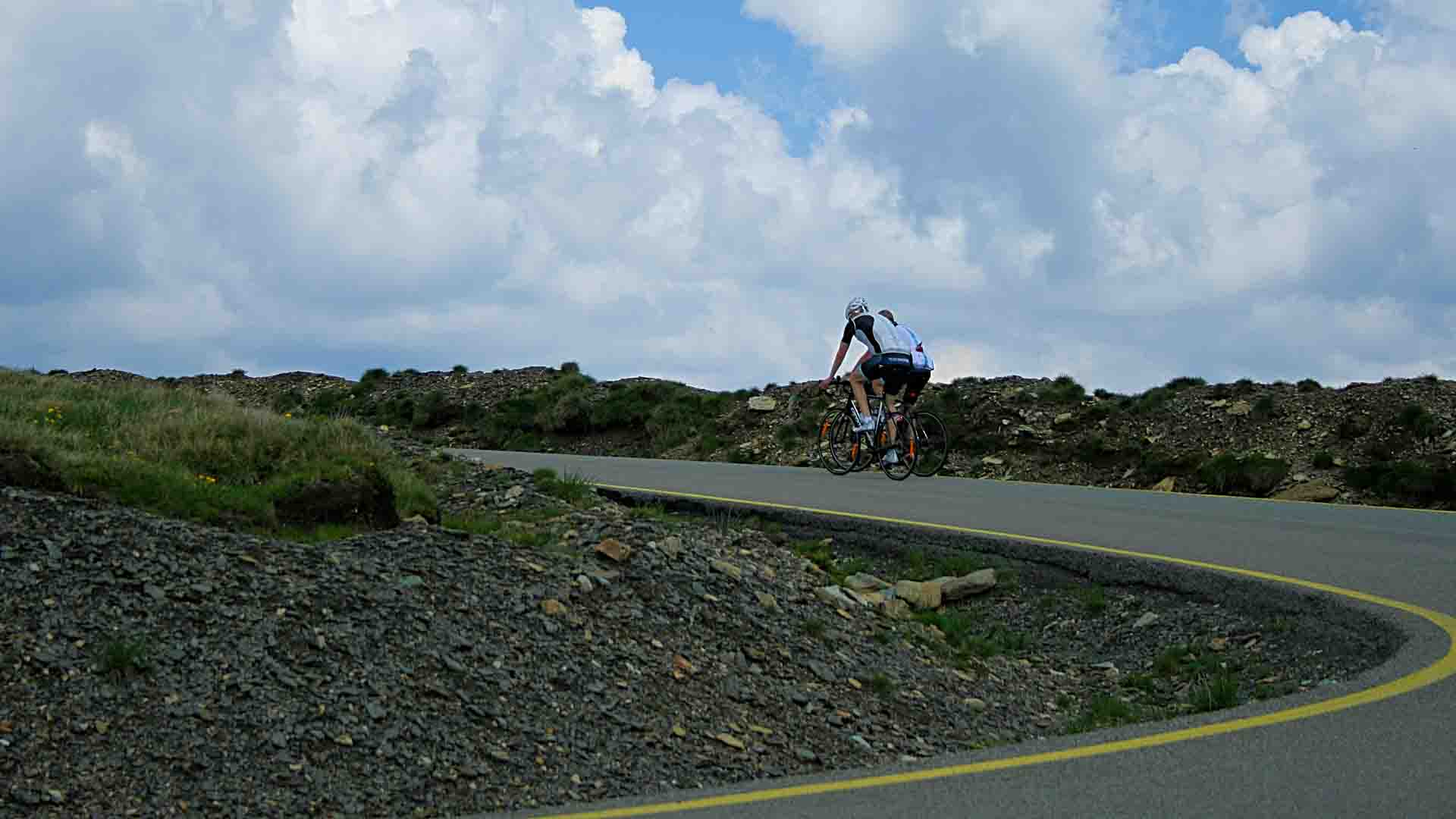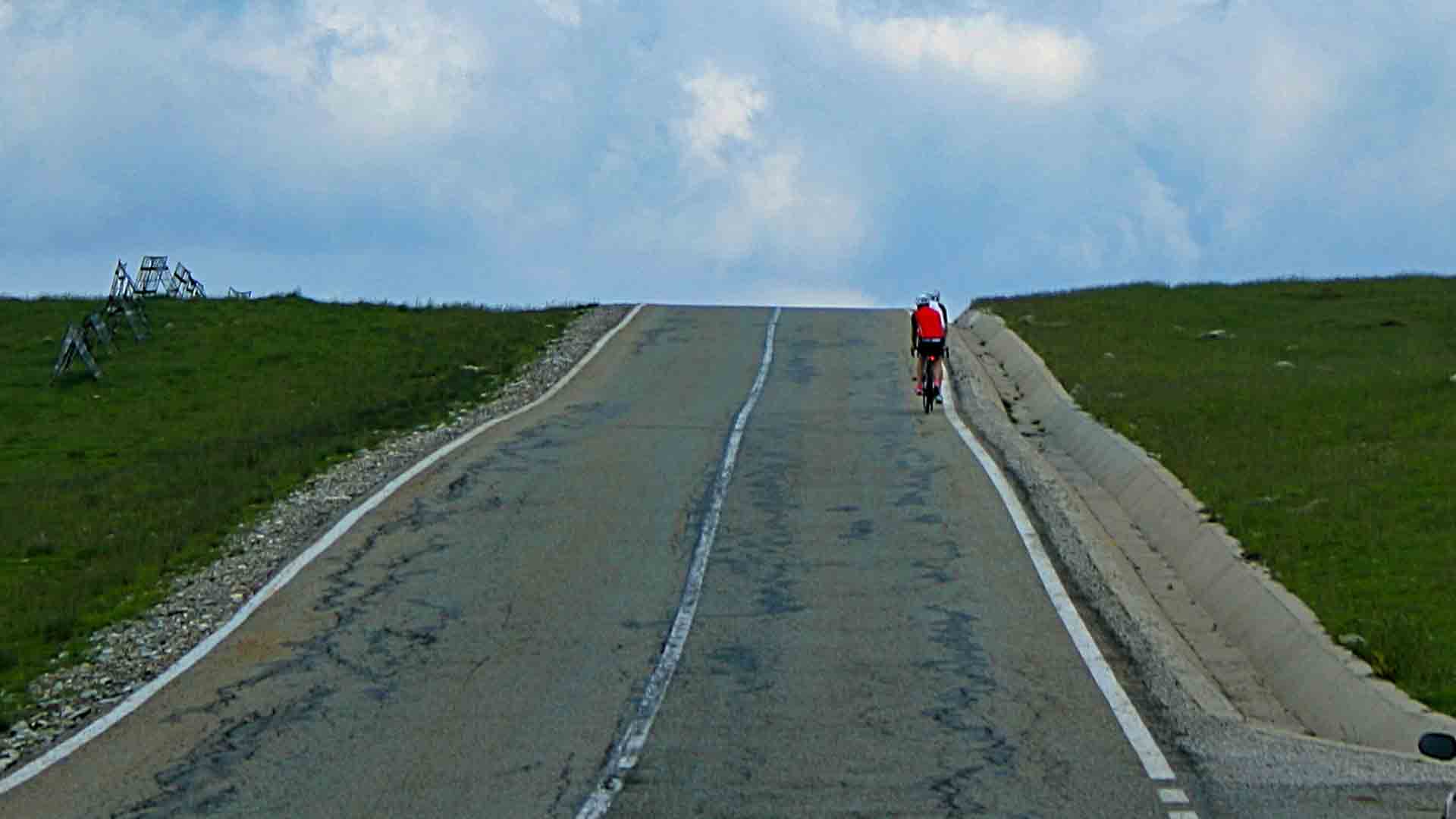The Transalpina is the highest paved road in Romania. It crosses the Carpathians and its story dates back to the Roman Empire and to the old Romanian Monarchy (as a result it’s also known as the King’s Road). It was rebuilt during World War 2, but was only fully paved in 2012.
Cycling the Transalpina is a must-do if you’re in Romania.
The official (or “old”) route of the Transalpina is 134km long and links Novaci in the south to the city of Sebeş in the north. An alternative “new” route links Novaci in the south and Saliste in the north. The two routes meet in Dobra. As Sibiu is a more popular hub in the north, most cyclists (and event organisers) ride a 160 km route that starts (or ends) in Sibiu and goes through Saliste to Dobra and on to the Transalpina Pass.
This review focuses on the Sibiu route. We’ve prepared it with the help of Ionut, from Bike in Time, and below you’ll find tips for getting the most from your Transalpina epic.
Note: we have been told that while wild bears are less of an issue on the TransAlpina than the Transagarasan, you may still come across them. This is because the road crosses forested areas, which is their main habitat. See also the note below regarding dogs.
Looking for our in-depth guide to cycling in Romania? Read this. Want tips on how to book a cycling holiday in Romania? Read this.
Highlights of cycling the Transalpina
The road offers gorgeous hairpin turns, and breathtaking views as it winds through the Carpathian Mountains’ glacial lakes, rolling pastures, and quaint villages. If this climb was in France, it would be a lot more famous than it is.
With a serene environment and rich history, cycling Transalpina is the kind of adventure you won’t forget in a hurry.
Sponsor Message
Want help organising your Romania cycling holiday?
Bike in Time have been planning bike tours in Romania since 2007 and would love to help plan yours.
Head over to Bike in Time's website to start crafting your perfect Romania cycling trip.
Exclusive offer: use the code below and get 10% discount on any services that you book direct with Bike in Time before 16 January 2026.
What to expect when cycling the Transalpina
Climbing the Transalpina from Sibiu
Ionut says, “Starting from Sibiu, the first 20 km rise gently through the villages surrounding the city of Sibiu.
Once you leave the main road (the National Road 7 (or DN7), the ride is mostly in the forest for about 70 kilometres. The first climbs are between 20 kilometres and 50 kilometres into the ride, when you reach 1,000m altitude. Then, a steep descent back to 500m altitude, and you are on the old route of Transalpina.
From here, you have 50 km climbing, up to 1,700 km altitude. This is the limit of Transylvania, and from here you are in another historical area of Romania – Valachia. A short 8 km descent will take you to the small village Obarsia Lotrului, which is a good place to have lunch.
The best part is yet to come: 15 kilometres of very steep climbing above the forest, then a three kilometre descent and again three kilometres of climbing to the highest point at the Pasul Urdele at 2,145m altitude. The landscape is impressive, though most would agree that the views aren’t quite as spectacular as on Transfagarasan.
Be aware that it’s not a summit with a village/tourist attraction, as the road was built with the practical purpose of crossing the Carpathian Mountains! However, there are 180 degrees views of the mountains nearby and the immense valleys. The feeling of climbing over 2,000m by bike also makes your day better!
Descending the Transalpina to Novaci
Of course, what goes up must come down, and what a ride it is! If you want, it can be a very fast descent…
The landscape, the winding road and the amazing satisfaction of being on top of Romania on your bike is just what you need to appreciate this wonderful country we have.
On the way down you pass Ranca, a winter resort, where you can stop for a meal, before reaching the end of the route, in the village of Novaci.”
Where to stay for cycling Transalpina
Ionut says, “With its grand plazas and narrow, winding streets, Sibiu’s Italian feel makes it a lovely place to spend time. There are lots of accommodation options. The villages surrounding Sibiu are also part of a touristic network, so you can easily find accommodation.
Other options:
- Along Transalpina itself, there are a few places to stay on Oasa Lake and in the village of Obarsia Lotrului. These are at a budget level and it is better to book in advance, especially in weekends and during the high season.
- There are a few good resorts along Vidra Lake.
- Novaci is also a good village option.
For more cycling friendly accommodation in Romania, check out www.velopopas.ro.”
Sponsor Message
Want help organising your Romania cycling holiday?
Bike in Time have been planning bike tours in Romania since 2007 and would love to help plan yours.
Head over to Bike in Time's website to start crafting your perfect Romania cycling trip.
Exclusive offer: use the code below and get 10% discount on any services that you book direct with Bike in Time before 16 January 2026.
Tips for cycling the Transalpina
1. Which way to ride the Transalpina
- Ionut says “If you start from the south side of the Transalpina, you will reach the top in only 30 km, then it is a long way (mostly descending) to Sibiu. The south side is steeper, with potentially more car traffic. The north side is a longer ride, much of which is through the forest. Should you not be interested in starting from Sibiu, you can start from Saliste, which is the official start of Transalpina.”
2. Food on the way up
We normally like to get the climbing done before we stop for a break. But it could be useful to know that From Tau Bistra up to the top of the TransAlpina, there are quite a few places you can get a snack or a cold beer. There’s even a sheep farm where you can have a Romanian dish called Bulz (cheese and milk with polenta) if you fancy it!
3. Choose the right time of year
Transalpina is located in the Carpathian Mountains of Romania, so it’s important to consider the weather and road conditions. The best time for cycling Transalpina is typically from late spring to early autumn when the roads should be passable and the weather is more favourable.
4. Prepare for high altitudes
Transalpina reaches elevations of over 2,000 meters, so be prepared for the thin air and colder temperatures. Dress suitably! Our packing list might be helpful (road list, gravel list)!
5. Train for the climb
This is a serious climb. Train and build your endurance before taking on this route. Consider incorporating hill training into your cycling routine to prepare your legs for the long ascents. You can find more tips here.
6. Don’t get carried away on the descents
Along with the challenging climb, Transalpina also offers exhilarating descent. However, use cautious and maintain control. Keep your speed in check and use proper braking techniques to ensure your safety.
7. Take in the stunning views
Transalpina is renowned for its beauty. Try to soak in the awe-inspiring landscapes as you clock up the kilometres.
8. Don’t expect to have the road to yourself
The Transalpina is popular with drivers and motorbikes too… sadly, cyclists aren’t the only ones attracted to switchback-laden mountain roads.
9. Watch out for the bears
You’re likely to come across at least a few bears. Dogs can also be an issue. Read more about them here. [LINK TO MAIN GUIDE]
What else to do along Transalpina?
If you want to spend more time around, or if you are together with a non-cyclist, here are a few touristic sites to visit before and during your Transalpina ride:
- Sibiu is a former European Cultural Capital (2007), and is famous for its cultural life
- The villages surrounding Sibiu are known for being a gastronomic region, and many promote Romania’s rural life and old traditions
- Vidra Lake is a relaxing area, where you can stay overnight, if you consider to split the route in two sections
- Close to Novaci village, there are a few UNESCO World Heritage sites: Horezu Monastery and the Horezu ceramic workshops
Looking for an organised tour?
Our three-day cycling trip that takes in both the Transfagarasan and Transalpina is really popular. You can find all the details here.
Sponsor Message
Want help organising your Romania cycling holiday?
Bike in Time have been planning bike tours in Romania since 2007 and would love to help plan yours.
Head over to Bike in Time's website to start crafting your perfect Romania cycling trip.
Exclusive offer: use the code below and get 10% discount on any services that you book direct with Bike in Time before 16 January 2026.
Got a question for Bike in Time?
Fill out this form and we will pass it to Bike in Time who aim to reply (within 24 hours wherever they can!)
Got a question for Ionut?
Fill out this form and we will send it to Ionut. We aim to get you an answer within 24 hours where possible!All metrics in this article are approximate.
The contents of this website are provided for general information purposes only. It is not intended to amount to advice and you should not rely on it. You should carry out your own due diligence and risk assessments and take professional advice. Views expressed by interviewees or other users of this website do not necessarily represent our views. We make no representations, warranties or guarantees, whether express or implied, that the content on our website is accurate, complete or up to date. If you use any information or content on this website, download from, or otherwise obtain content or services through our website, it is entirely at your own discretion and risk. Epic Road Rides Ltd disclaims all liability and responsibility arising from any reliance placed on the information and content on this website. Find out more here.
Sponsor Message
Want help organising your Romania cycling holiday?
We’ve been planning bike tours in Romania since 2007 and would love to help you plan yours.
Get in touch and let's discuss the best holiday for you.
Head over to our website so we can start helping you craft your perfect Romania cycling trip.


